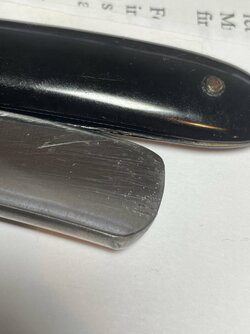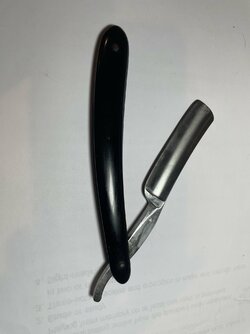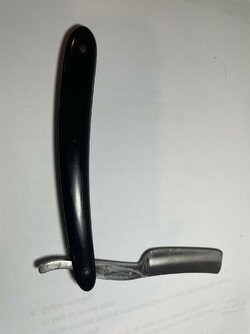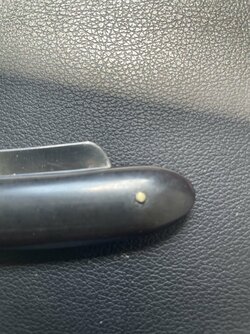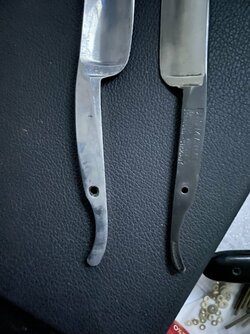I bought this razor off ebay - looks great except for one problem. The blade dings on one side of the scale when opening and closing. The blade and the scales are in great condition, it doesn't have much honewear either. It's most likely that the previous owner just let it sit due to this problem of dinging.
Another observation - the hole size on the tang is bigger than the pivot pin. I can move the blade within the scales while it's in the closed position.
Do I need to repin the wedge? It seems to my untrained eye that maybe the wedge is not thick enough relative to the size of the blade.
Alternatively, should I try what @Slash McCoy documented here Size of pin relative to pivot hole - https://www.badgerandblade.com/forum/threads/size-of-pin-relative-to-pivot-hole.640808/post-12295368

Another observation - the hole size on the tang is bigger than the pivot pin. I can move the blade within the scales while it's in the closed position.
Do I need to repin the wedge? It seems to my untrained eye that maybe the wedge is not thick enough relative to the size of the blade.
Alternatively, should I try what @Slash McCoy documented here Size of pin relative to pivot hole - https://www.badgerandblade.com/forum/threads/size-of-pin-relative-to-pivot-hole.640808/post-12295368

